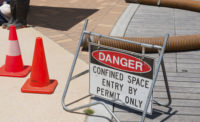“It’s past time for someone to stand up and say it, DIVERSITY, the crap that it is!”
This is a longtime safety professional getting it off his chest in an email I received a couple of weeks back. Not one afraid to dive into the culture wars and offend – a bit unusual in my experience for safety and health pros.
Then again, this self-described “purposely politically incorrect” CSP is a retired VP of safety and answers to no boss no more. And really, he’s going public (and nuclear) with an opinion shared by many who have attended an HR-driven mandatory diversity training class. Especially training perceived as a corporate politically correct, yep, stab at staying compliant with laws and checking off a box.
Like many a safety training class, actually. Unfortunately. A lot of eye-rolling there, too.
This pro’s rant got me thinking. Diversity is like motherhood and apple pie, isn’t it? From the Oxford Dictionary: di-verse, showing a great deal of variety. Mix it up. Allow for differences. Variety is the spice of workplace safety and health sustainability. Who wants the same OSHA compliance training course year after year? Who wants top-down safety mandates with no input or feedback from supervisors and the front line?
‘Nothing new’
Now I’m straying into the politically correct culture waters of inclusion. Another form of what the retired VP of safety calls “social engineering.” Along with the third pillar, equity. The whole diversity, equity and inclusion (DEI) set of strategies and tactics, if you will, favored by investors studying brand reputations, corporate responsibility, and ESG scores – the ranking of environment, social and governance policies and practices of companies.
Critics argue diversity, equity and inclusion and associated values and programs are simply superficial, trendy attempts to look good. Nothing more than social issues greenwashing. But the more I researched into diversity in the business world, the more I realized there’s nothing trendy or new about it.
You can particularly apply this to safety and health work.
Really, there is nothing new about engaging a worker’s unique skills, experiences and perspectives to make for a more effective and collaborative safety team or safety culture. Nothing new at all about creating a culture that actively makes each employee feel welcome, appreciated, respected and listened to. Nothing new about asking employees for their views on safety, where’s the next incident going to occur and why? Nothing new about conducting perception surveys. Or airing out differences of opinions and grievances at safety meetings. OK, the room can get a bit hot and you need good leadership, but it beats another lecture on complacency.
Today we call it “open communication” and “transparency.”
Safety and health pros have been told for decades to pivot from the policing role and be willing to empathize with employees, shut up and listen, facilitate, adapt and change course when necessary, and let each individual know that they count.
Have pros been practicing ‘social engineering’ all along?
By the way, there are two definitions of social engineering. Very different. One is to persuade. The other is to manipulate.
I’ll give you my own:
Engineer safety and health away from coming off as politically correct or a product of culture wars. Sound and fury signifying nothing. Not easy to do in a time of divisive upheaval. If not near civil war. Instead, do some research, study safety’s history. The profession recycles practices and programs with new buzzwords and trendy terminology like DEI. But many of the core competencies have been around for generations. Including leveraging diversity to build engagement. Treating employees equally. And including the voice, the ideas of employees in building better safety and health processes.




